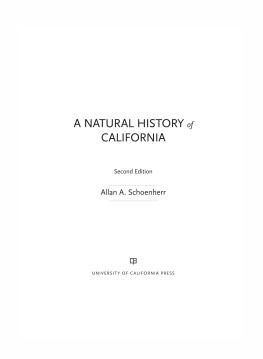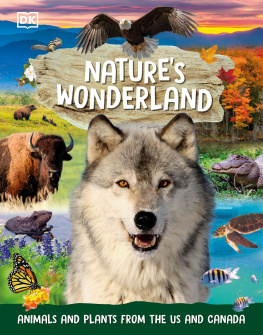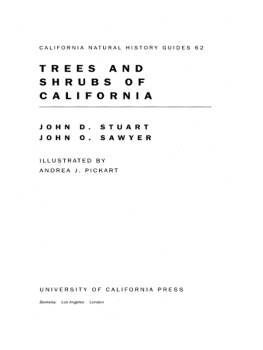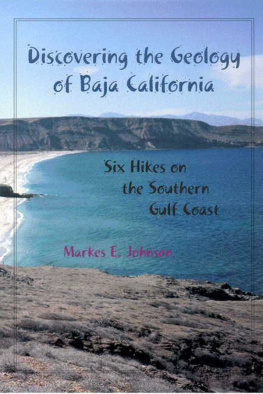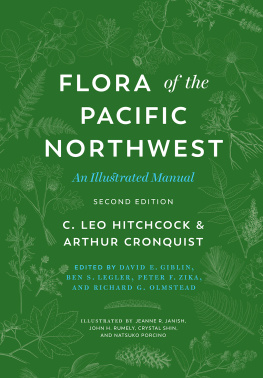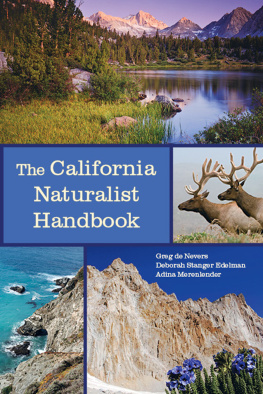ACKNOWLEDGMENTS
For fear of forgetting someone, I am tempted not to acknowledge anyones help on this book. However, with a project of this size, it is obvious that quite a few people had something to do with the outcome. With this in mind, I hope that the friends, colleagues, and acquaintances that were inadvertently overlooked will understand how much I appreciate their help.
For starters, I am indebted to the administration of Fullerton College for providing me with a sabbatical leave, during which time I wrote the first draft. Second, Debbie Horrocks and Amy Gigliotti converted the typewritten first draft to word-processed versions. I am also deeply indebted to Fullerton College computer wizards such as Kent Gordon, Co Ho, Vinh Ho, Geoff Clifton, and Bill Dalphy, who tirelessly gave their time to jury-rig equipment and write programs enabling me to incorporate numerous revisions with minimal effort and convert all my computer files to a single format.
Unless otherwise noted, all photographs are mine. For contributions of art, I appreciate the work of Karlin Grunau Marsh, Phil Lingle, Geoff Smith of Fullerton College, Pat Brame of Eaton Canyon Nature Center, and Philip Brown of the Southwestern Herpetologists Association. Further thanks go to those many persons cited in text who gave me permission to use work from previously published materials.
For their sage advice and comments on writing style, I am deeply appreciative to the following persons: Diana Cosand from Chaffee College and Chuck Leavell of Fullerton College, for their help with the sections on basic ecology; Peter Tresselt, formerly of Fullerton College, Rick Lozinsky of Fullerton College, and N. King Huber of the US Geological Survey, for their help with the sections on geology; Alan Romspert of the California State University Desert Studies Consortium and Lenny Vincent of Fullerton College, for help with Chapter 9, on deserts; and Phil Pister of the California Department of Fish and Wildlife for his extremely helpful review of Chapter 11, on inland waters. In preparation of the second edition, I am indebted to colleagues such as Mick Bondello, Chuck Leavell, Doug Allan, Rick Lozinsky, and Lenny Vincent who kindly read and made beneficial suggestions.
Finally, I am indebted to Art Smith and Ernest Callenbach, editors from the University of California Press, who provided invaluable assistance and encouragement at all stages in the development of the first edition. I am thankful for the encouragement of Blake Edgar from the University of California Press, without which I would not have undertaken the effort to do a second edition.
PREFACE
In 1992, when the first edition of this book was published, the University of California Press, in celebration of entering the second century of publishing, honored A Natural History of California among 100 Centennial Books published between 1990 and 1995. A special imprint opposite the title page declared that special honor. It has been 25 years since the first edition of this book was written. During that time, several things have changed that should be addressed. For starters, associated with a revolution in DNA technology, there has been a serious realignment of biological taxa. Not only have many species names been changed, but there has also been significant reassignment within families. Several strange relationships have appeared. For example, Maples and Buckeyes are now in the Soapberry family, Sapindaceae. Some familiar families have been broken up. For example, the Figwort or Snapdragon family, Scrophulariaceae, is now broken up into three families. Bee Plant, Scrophularia , and Mullein, Verbascum , are still Scrophs, but the Bush Monkeyflowers, Mimulus spp., are in the Lopseed family, Phrymaceae. The Broomrape family, Orobanchaceae, now includes Broomrape ( Orobanche ), Birds Beak ( Cordylanthus ), Lousewort ( Pedicularis ), and Paintbrush and Owls-clover ( Castilleja spp.). The Plantain family, Plantaginaceae, includes Snapdragons ( Antirrhinum ), Chinese-houses ( Collinsia ), Ghost Flower ( Mohavea ), Bush Penstemon ( Keckiella) , and all the herbaceous Penstemons ( Penstemon spp.). The Lily family, Liliaceae, has been split into at least six families. Remember the Lily family? About all that remains in the Lily family are Mariposa Lilies ( Calochortus spp.). Now, Agaves, Yuccas, and Desert Lilies ( Hesperocallis ) are in the Agavaceae. Onions and garlics are in the Alliaceae. Beargrasses ( Nolina spp.) are in the Butchers-broom family, Ruscaceae. The Brodiaea family, Themidaceae, includes Brodiaeas ( Brodiaea spp.), Goldenstars ( Bloomeria spp.), and Blue Dicks ( Dichelostemma spp.). Most of the garden varieties such as Daffodils, Paper Whites, Narcissus, and Naked Ladies are now in the Amaryllis family, Amaryllidaceae.
There have been many changes in animal taxonomy as well. Not only have many of the familiar genera and species names been changed, but there have been family realignments as well. For example, in the past, many of our familiar lizards have been in the Iguana family, Iguanidae. Desert Iguanas ( Dipsosaurus ) and Chuckwallas ( Sauromalus ) are still Iguanas, but the Collared Lizards ( Crotaphytus ) and the Leopard Lizards ( Gambelia ) are now in the Crotaphytidae. All the rest, at least seven genera of common lizards, including Fence Lizards ( Sceloporus ) and Side-blotched Lizards ( Uta ), are now in the Horned Lizard family, Phrynosomatidae.
Essentially all of the traditional field guides are now out of date. In order to compensate for that problem, I often will include the new scientific name followed, in parentheses, by the former scientific name of the various plants and animals that I discuss. The concept, for naming purposes, of making scientific names permanent by using the dead languages Greek and Latin, in recent years, has been upended with so many name changes. It is a bit ironic that the unofficial common names of many species have become more permanent than the scientific names.
Another big change for California is that many of the regions and parks that I discuss have been reclassified by federal and state agencies. For example, Death Valley, Joshua Tree, and Pinnacles have been enlarged and upgraded from National Monuments to National Parks, and a large region of the east Mojave Desert has been established as the Mojave National Preserve. Furthermore, a number of lands administered by the US Forest Service and the Bureau of Land Management (BLM) have been reclassified. For example, the San Gabriel Mountains, Berryessa Snow Mountain, and Giant Sequoia in the Sierra National Forest have been upgraded to National Monuments and will be administered by the National Park Service.

